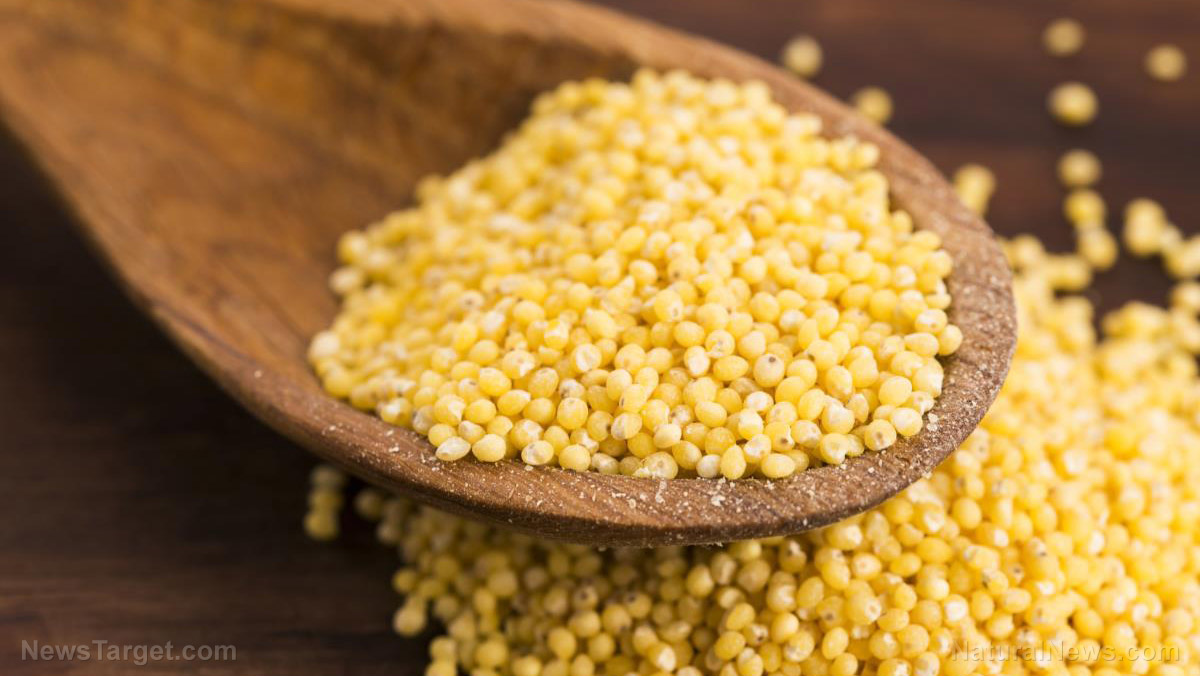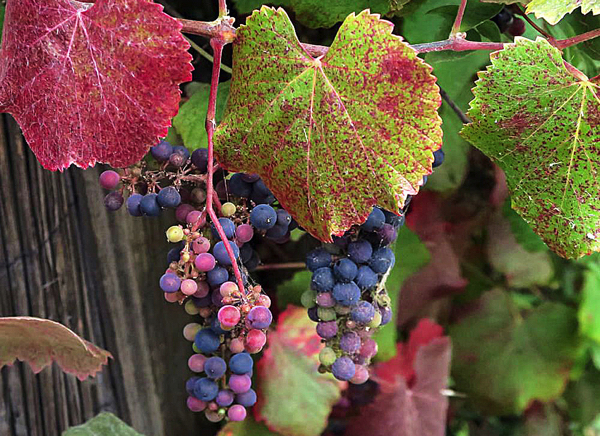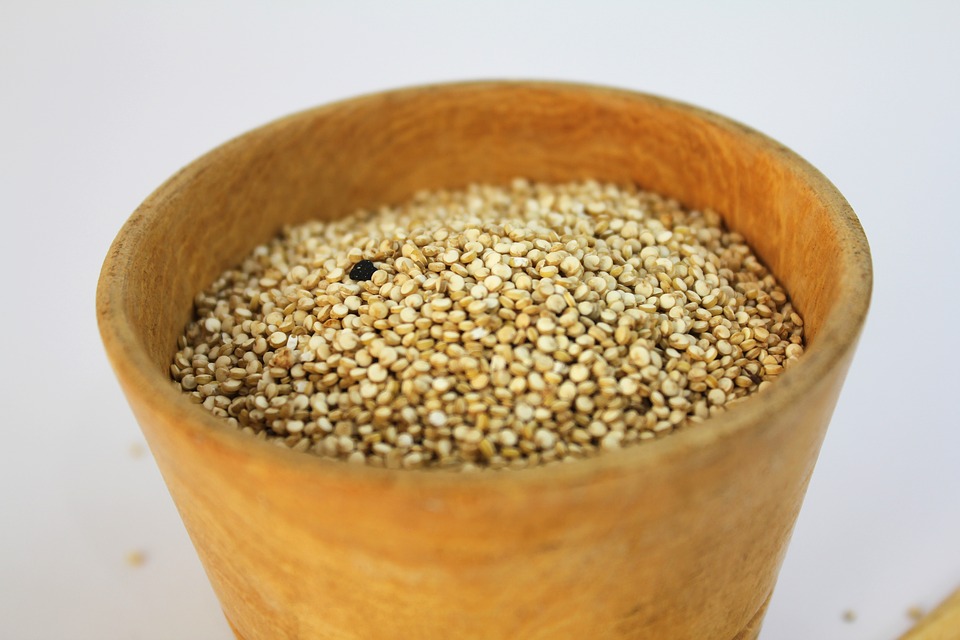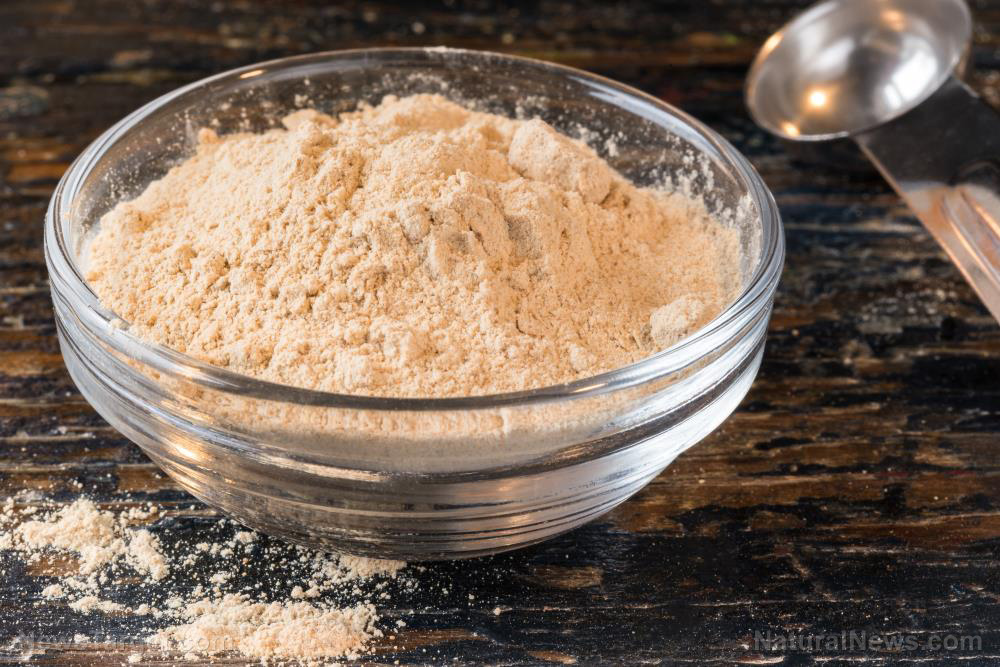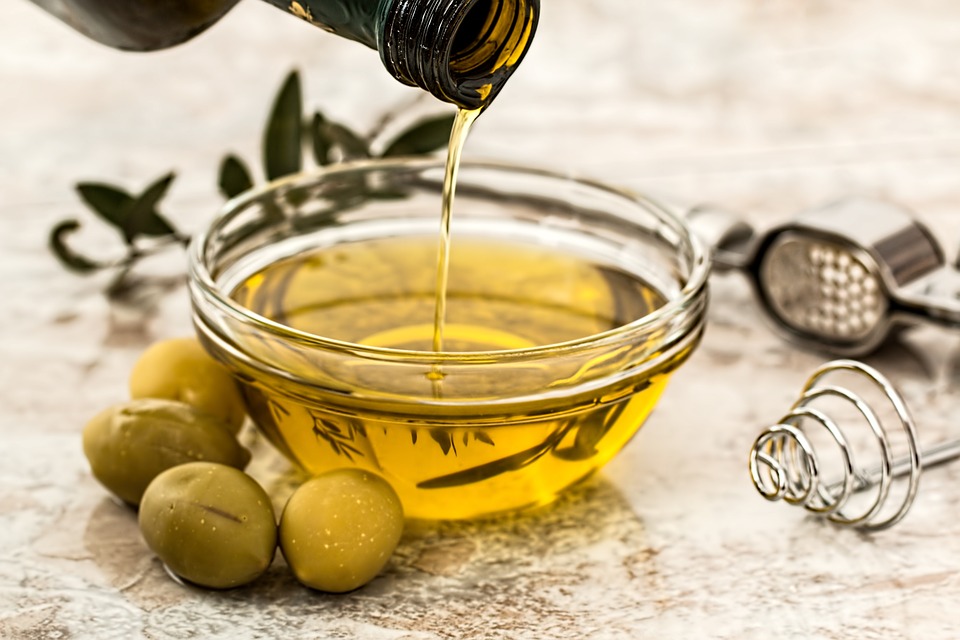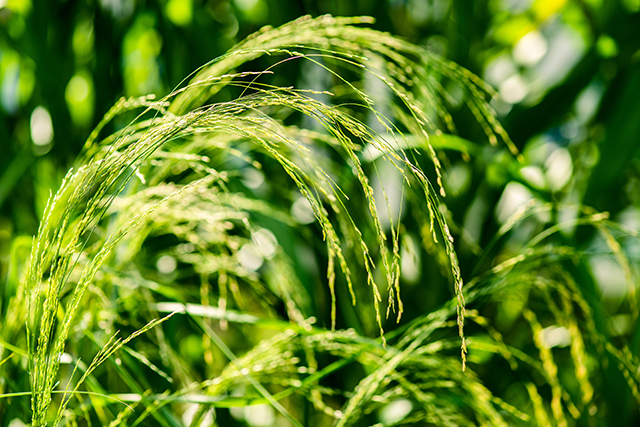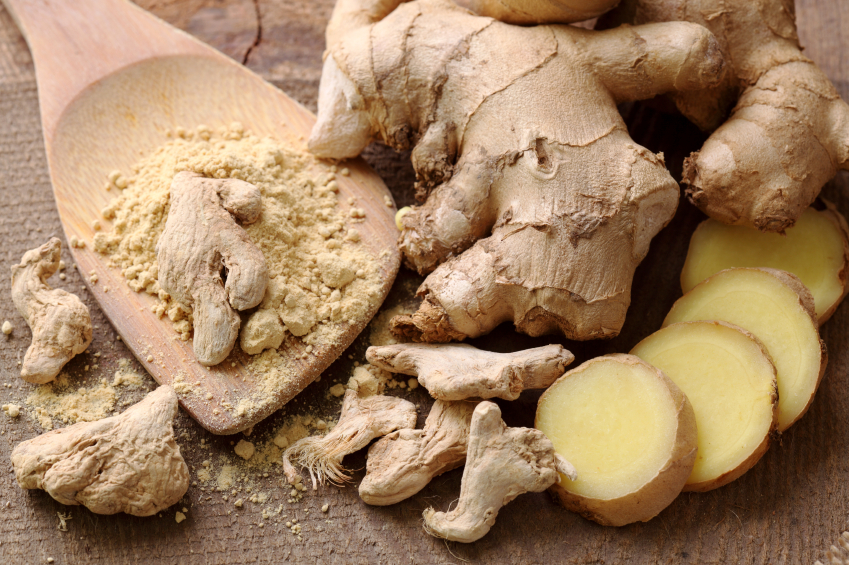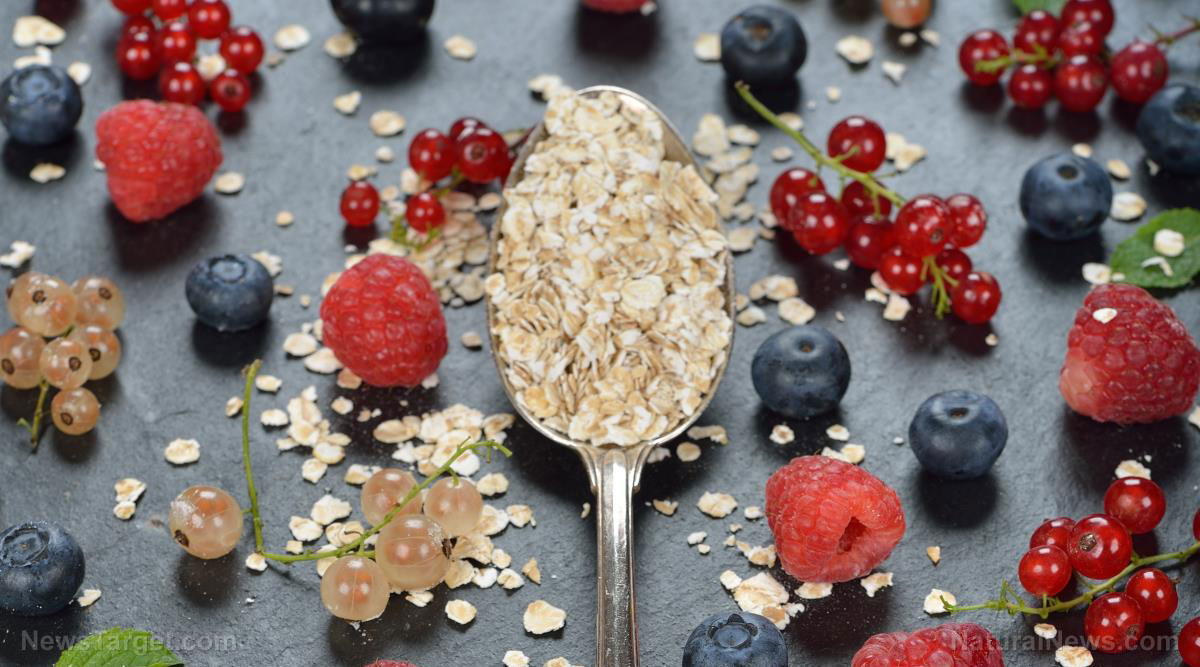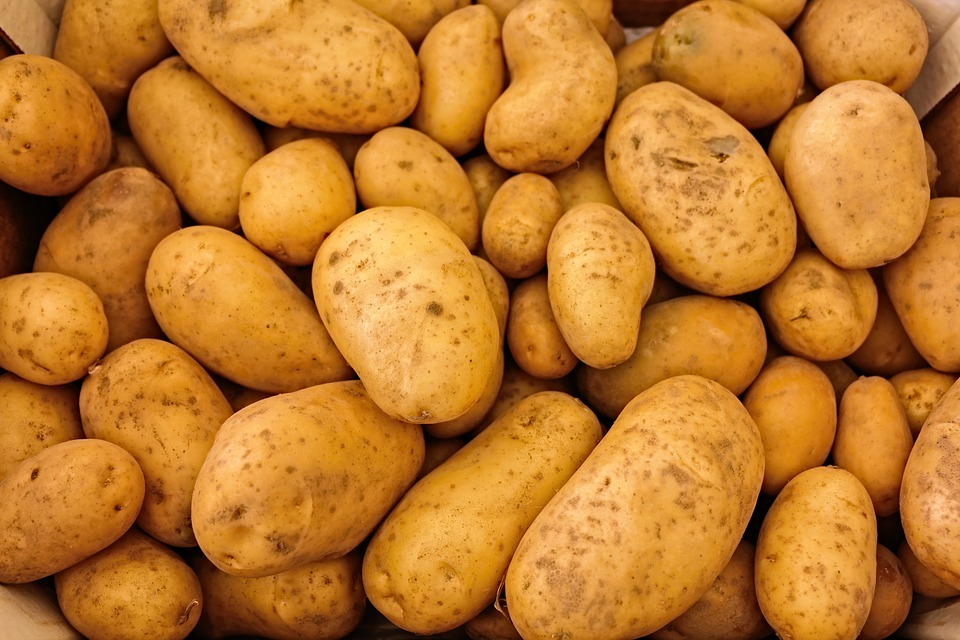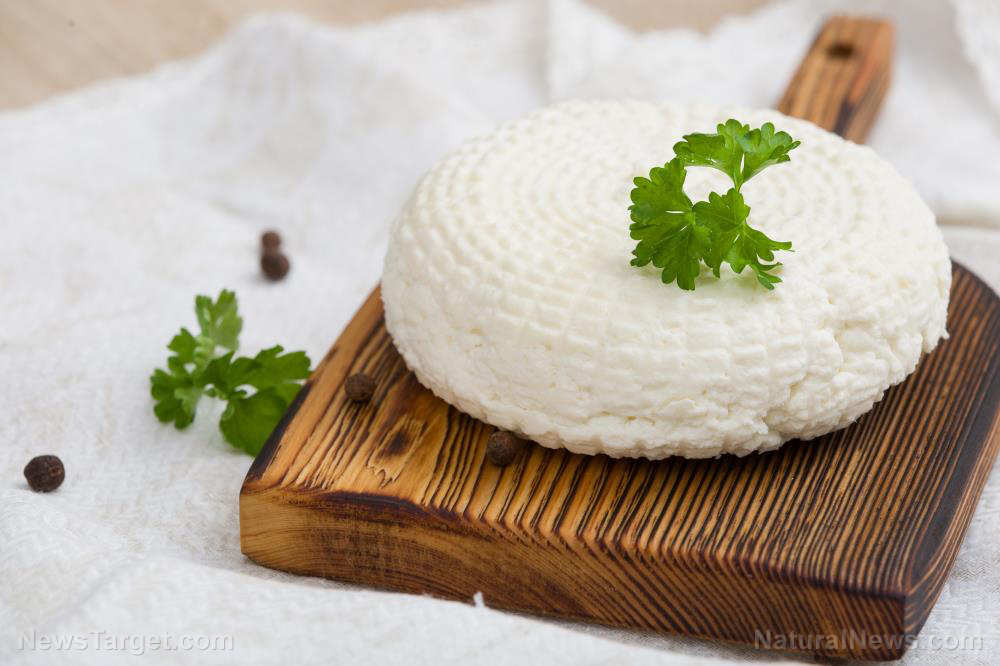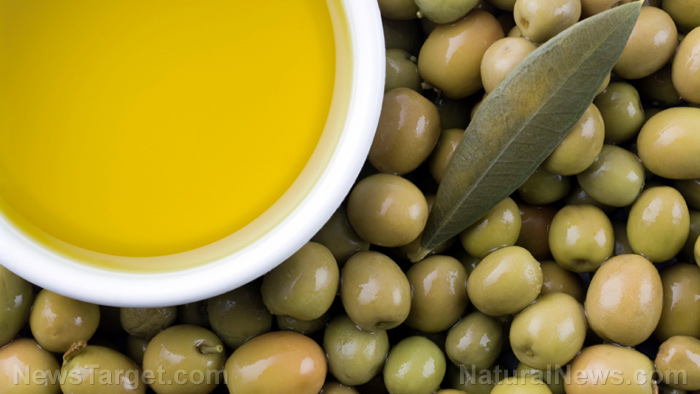Buckwheat: A gluten-free superfood for modern health
04/21/2025 / By Laura Harris
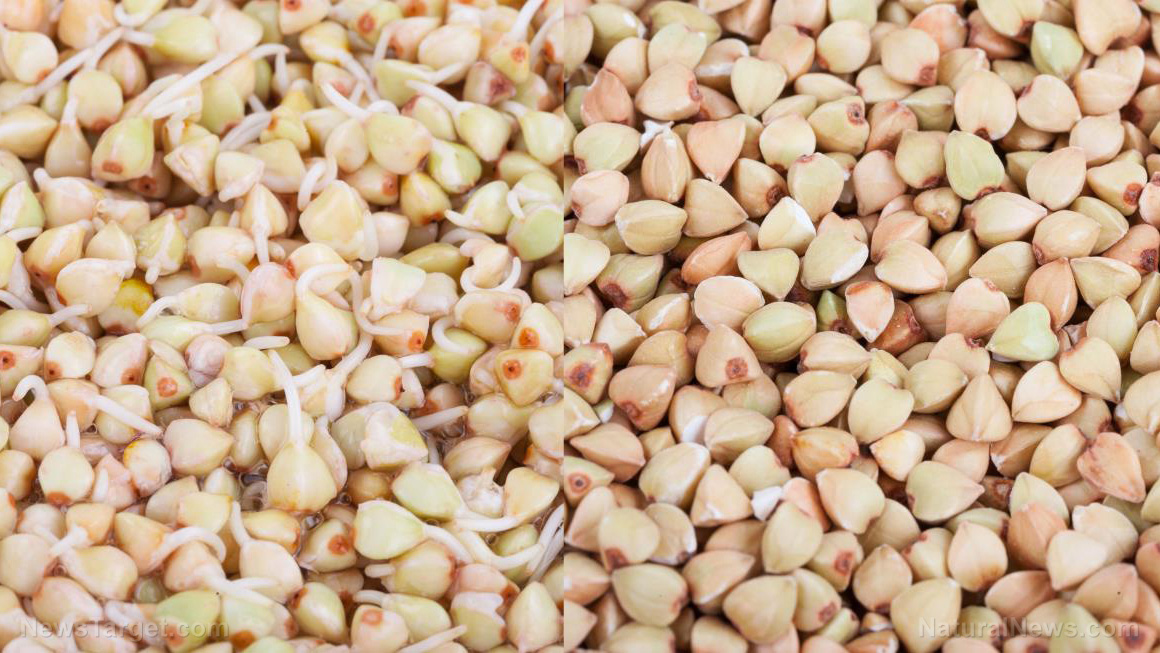
- Buckwheat refers to the seeds of the Fagopyrum esculentum plant and is a pseudo-cereal unrelated to wheat. It’s naturally gluten-free, making it ideal for those with celiac disease or gluten intolerance.
- Buckwheat is packed with protein (all nine essential amino acids), fiber, magnesium, iron and antioxidants like rutin (supports blood vessel health) and quercetin (anti-inflammatory). Its low glycemic index helps with blood sugar control.
- Cultivated for over 8,000 years, buckwheat spread from Asia to Europe and North America. It thrives in poor soil, requiring minimal resources.
- It can be used whole (groats, porridge), as flour (pancakes, noodles) or in savory/sweet dishes. Buckwheat’s high-protein content also makes it a vegan meat substitute.
- Rare allergies or skin reactions may occur. Buckwheat contains phytic acid, an antinutrient that can be removed by soaking the seeds in water overnight.
In today’s fast-paced world, nutrient-dense foods are more important than ever. Among the many overlooked superfoods, buckwheat stands out as a nutritional powerhouse with a rich history, robust health benefits and culinary versatility.
Despite its name, buckwheat is not related to wheat – it’s the gluten-free seeds of the Fagopyrum esculentum plant, making it an excellent option for those with celiac disease or gluten intolerance.
Brief history of buckwheat
Buckwheat has been cultivated for over 8,000 years, originating in Southeast Asia and later spreading to Europe and Russia. It was a staple in traditional diets across China, Japan (where it is known as soba) and Eastern Europe.
In the Middle Ages, buckwheat gained popularity in Europe due to its adaptability to poor soil and short growing season. Russian and Polish communities used it extensively to make kasha, a porridge-like dish.
Buckwheat was introduced to North America in the 17th century by Dutch settlers. Today, it is globally recognized as a functional food high in protein, fiber and essential minerals.
Nutritional benefits and considerations
Buckwheat is far more than just a filler grain – it is a complete protein source, containing all nine essential amino acids, including lysine and arginine, which many other grains lack. (Related: 4 Health benefits of buckwheat, a nutrient-rich whole grain.)
Key nutrients in buckwheat (per 100 grams, g, cooked):
- 3.4 g of protein, which is more than most grains have
- 1.7 g of fiber for digestion and gut health support
- 51 milligrams (mg) of magnesium to support heart and nerve function
- 0.8 mg of iron for oxygen transport and energy production
- Antioxidants like rutin and quercetin to combat inflammation and improve blood circulation. Its high rutin content also strengthens blood vessels.
Buckwheat also has a low glycemic index (GI), making it suitable for diabetics.
While buckwheat is highly nutritious and offers health benefits, there are a few points to consider.
Though rare, buckwheat allergies can occur, leading to reactions like itching or swelling. It is advisable to avoid consuming buckwheat during high fever, extreme thirst or hypertension.
Like many seeds, buckwheat contains phytic acid, which can reduce mineral absorption. Soaking or fermenting it before cooking can help mitigate this issue.
Compared to soybeans, another protein-rich plant food, buckwheat is a safer and less controversial option. While soy provides beneficial compounds like phytoestrogens and protein, it is frequently genetically modified (GMO) and may interfere with thyroid function when consumed in excess.
Buckwheat, on the other hand, is naturally non-GMO and generally poses fewer dietary concerns. Overall, buckwheat is a nourishing super grain with many advantages, though its consumption should be tailored to individual health needs.
Organic vs. conventional buckwheat
To minimize pesticide exposure, choosing organic and non-GMO foods is crucial.
Conventional wheat, for example, is frequently treated with glyphosate, a herbicide tied to nutrient deficiencies and potential health risks, prompting scientists to advocate for stricter global regulations.
Opting for organic wheat not only helps you avoid glyphosate (which is banned in organic farming) but may also resolve symptoms mistakenly attributed to gluten sensitivity, as they could stem from glyphosate poisoning.
Similarly, while buckwheat is naturally pest-resistant and typically low in pesticide residues, non-organic varieties may still contain glyphosate or heavy metals like cadmium and lead if grown in contaminated soil.
For the cleanest option, prioritize organic buckwheat sourced from high-altitude regions such as the Himalayas, where soil quality tends to be purer. By focusing on organic and responsibly sourced foods, consumers can significantly reduce their exposure to harmful agrochemicals and environmental toxins.
Culinary uses of buckwheat
Buckwheat’s nutty, earthy flavor works well in both savory and sweet dishes. Here are common ways to eat it:
Buckwheat groats (whole or cracked seeds)
- Kasha (Eastern European staple): Toasted buckwheat cooked like porridge.
- Pilafs and grain bowls: Mixed with vegetables and spices.
- Buckwheat and quinoa Buddha bowl
Buckwheat flour (gluten-free baking)
- Pancakes: Russian blini, Japanese soba pancakes or gluten-free buckwheat banana pancakes.
- Breads and muffins: Often blended with other flours.
- Buckwheat chocolate chip cookies (flourless recipe)
Soba noodles (Japanese cuisine)
- Made from buckwheat flour, served cold with dipping sauce or in soups.
Buckwheat as a meat substitute
- Its high protein content makes it great for vegan patties or burgers.
This story is not medical advice and is not intended to treat or cure any disease. Always consult with a qualified naturopathic physician for personalized advice about your specific health situation or concern.
Visit NaturalNews.com, a great article source where you can learn about superfoods and their health benefits.
You can also try Brighteon.ai, an AI model created by Mike Adams, also known as the Health Ranger. This model is available as a free download to be run locally and is designed to help share and decentralize knowledge. By doing so, it aims to bypass censorship and empower people with knowledge.
If you’re looking for an uncensored video free speech website where you can openly discuss nutrition, natural medicine, ingredients and more, check out Brighteon.com and out two free speech social media sites, Brighteon.IO and Brighteon.social.
Watch this video to learn how to grow buckwheat.
This video is from the Life in the country channel on Brighteon.com.
More related stories:
Tartary buckwheat shown to improve lipid profile, reduce insulin resistance.
Buckwheat is an underutilized crop that holds great antioxidant potential.
Buckwheat flour: a healthy, gluten-free alternative to white flour.
Sources include:
Submit a correction >>
Tagged Under:
buckwheat, food cures, food is medicine, food science, functional food, gluten free, grocery, health science, ingredients, natural health, nutrition, organics, phytonutrients, seeds
This article may contain statements that reflect the opinion of the author
RECENT NEWS & ARTICLES
COPYRIGHT © 2017 TOP 10 GROCERY SECRETS

